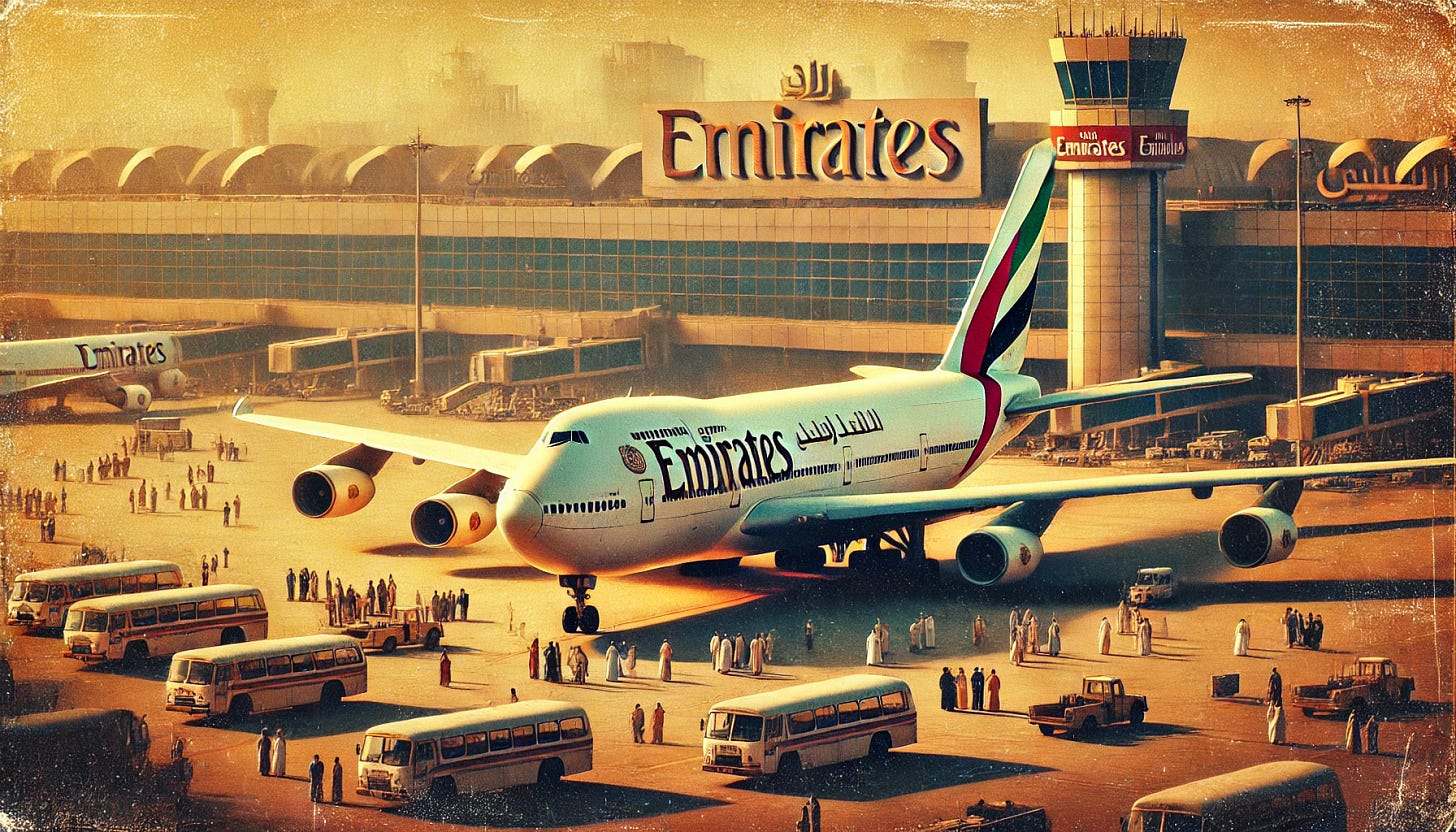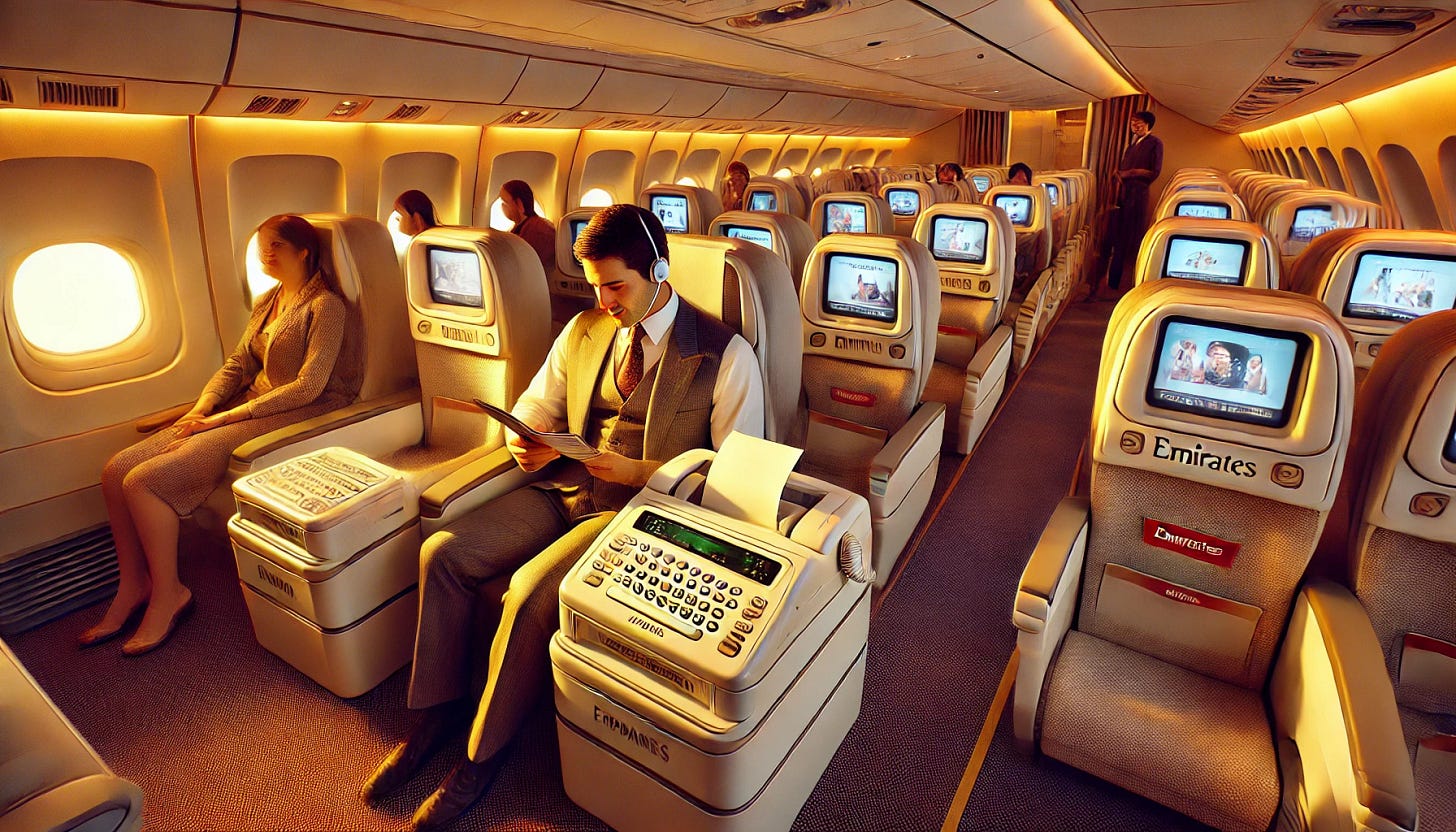Emirates Airline: A Three-Part Story of Ambition, Innovation, and Resilience
Discover the untold story of Emirates Airlines' remarkable rise, the challenges it overcame, and how it revolutionised the aviation industry.
A Visionary's Dream
In the mid-1980s, Dubai was still just a modest trading hub. Its skyline was dominated by low-rise buildings and the vast desert that stretched endlessly. But in this quiet corner of the world, a vision was already brewing, one that would change the face of aviation forever.
Sheikh Mohammed bin Rashid Al Maktoum, then the Minister of Defense and a member of Dubai’s royal family, had a radical idea. He saw the potential of air travel to transform Dubai into a global center of commerce, tourism, and innovation. But there was one challenge: Dubai didn’t have its own airline.
He asked Maurice Flanagan, the managing director of dnata, to explore the idea of creating an airline. With no time to waste, Sheikh Mohammed set the wheels in motion to make it a reality.
The Birth of Emirates
By December 1984, the plan was ready. The name “Emirates” was chosen for the new airline, symbolizing the pride and strength of Dubai’s royal family. Maurice Flanagan was handed the challenge: launch an airline within 5 months with $10 million in seed funding.
But here’s the kicker: Emirates was going to be different. It wasn’t just about flying people from point A to point B. The airline had to "look good, be good, and make money." No subsidies. No government protection. Just a bold idea and the ambition to compete with some of the world’s biggest airlines.
Maurice and his team set out to build a new kind of airline—one with top-tier service, global ambition, and innovative thinking. But there was one major obstacle: emergency resources. Emirates had no planes to call its own. They were forced to lease planes from Pakistan International Airlines (PIA), but that didn’t stop them. The vision was clear: go big or go home.
Humble Beginnings
On October 25, 1985, Emirates took flight for the first time. The airline’s inaugural journey was from Dubai to Karachi and Mumbai, with a small fleet of leased aircraft. While the airline didn’t yet have its own planes, it was already making waves. Within just five years, Emirates had expanded its network to more than a dozen destinations across Asia, Africa, and Europe.
This early success, however, didn’t come without challenges. The global travel landscape was tough, and Emirates had to quickly prove that it was more than just a modest airline. To succeed, they had to compete fiercely against established airlines, innovate their service offerings, and stay true to their ambitious vision.
Early Challenges and Innovations
In the early 1990s, the airline faced a major disruption: the Gulf War. Airlines around the world were affected by a sudden drop in air traffic, and Emirates was no exception. However, despite the economic downturn and travel restrictions, Emirates never stopped flying. It continued to serve key destinations, sticking to its mission: to be reliable and exceptional in service, no matter the circumstances.
As the world recovered from the Gulf War, Emirates emerged even stronger, with a reputation for resilience and reliability that would serve as the foundation for its future success.
But Emirates wasn’t just going to sit back and relax. In 1992, the airline became the first to equip every seat on its fleet with video systems. It was a game-changing move that set a new standard for in-flight entertainment.
They didn’t stop there—telecommunications was introduced in every seat class, and the airline was the first to introduce in-flight fax services. These innovations were designed not only to entertain but to connect passengers in ways they had never experienced before.
As we wrap up Part 1 of the story, Emirates is no longer just a modest airline. It has grown rapidly, facing its fair share of challenges and successes. The introduction of innovative technology and the airline's resilience during the Gulf War laid the groundwork for a promising future.
But how did Emirates navigate the world’s challenges and rise to become the global leader we know today?
Stay tuned for Part 2,
Where we’ll dive deeper into the fierce competition Emirates faced, its remarkable growth, and the next level of innovation that changed aviation forever.








